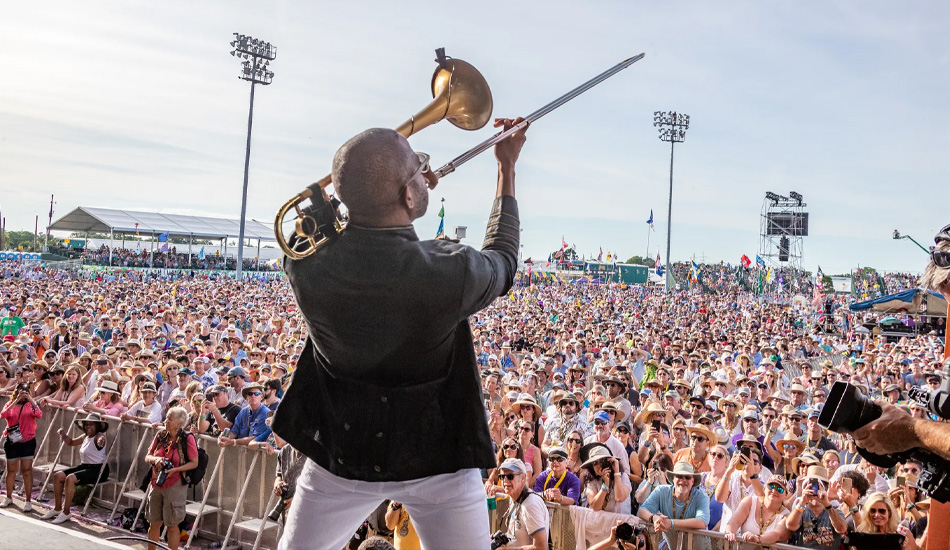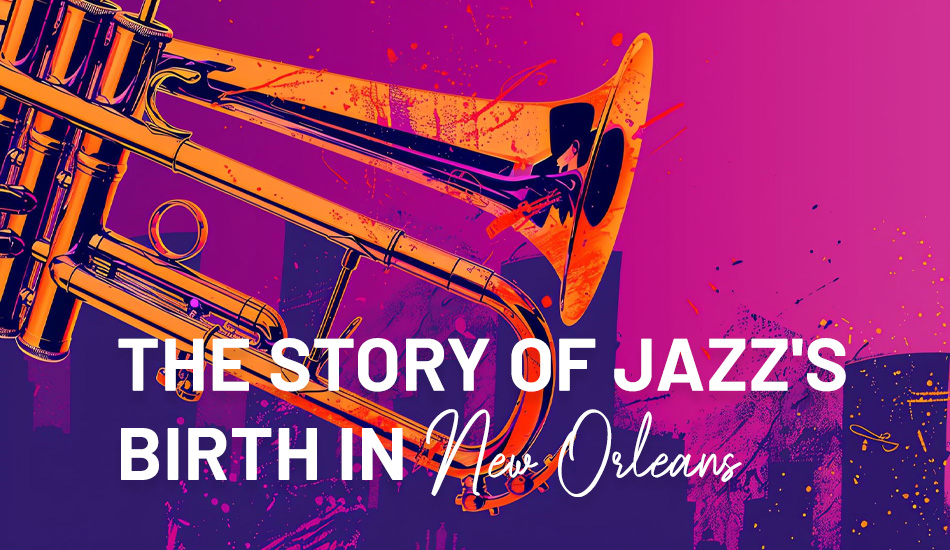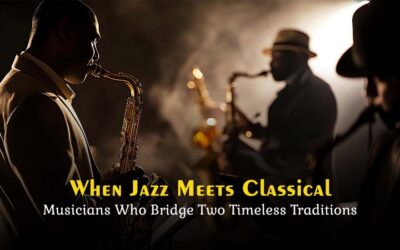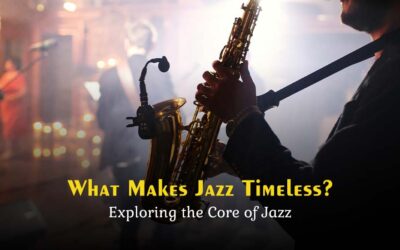New Orleans, known to be the birthplace of jazz music, is an ethnic crossroads and home of innovation. This colorful city saw the development of an art form that is American at its core and has audiences all over the world. Here, we go further into the features, roots, and proponents of New Orleans Jazz. We will also talk about its innovative functions and how the world witnesses the continuation of jazz performance, explaining why New Orleans continues to be a central place for jazz lovers and performers.
What is New Orleans Jazz?
New Orleans Jazz, also called traditional or Dixieland Jazz, originated in the early twentieth century in America. This genre is specifically a result of the accumulation of cultures in the city, which came from a mixture of African, Caribbean, and European cultures. Initially, this style is characterized by collective improvisation, syncopated with varying rhythms, and a prominent brass section, making New Orleans Jazz famous even in the contemporary music environment.
Characteristics of Jazz
The defining elements of New Orleans jazz include:
- Instrumentation: The New Orleans jazz orchestra has particularly adopted a very rich harmonic formation of instruments to give the required harmony. The cornet plays the tune of the song, while the clarinet and the trombone support it with strong lines and presented harmonies. The tuba takes care of the bass, while the banjo supplements rhythmic drive, and the drums supply the necessary and dynamic rhythms to produce the genre’s beat which is lively and syncopated.
- Rhythm: Some of the features of this kind of Jazz is its fast pace and regular two-beat patterns. This creates a feel that is fast-paced and can be easily associated with dancing since the tracks’ tempo is always fast. Thus, as in ragtime, the main element that contributes to the kind of playfulness and improvisational character presupposed by the misleading accents is syncopation.
- Improvisation: The most outstanding characteristic of New Orleans Jazz, arguably, is the element of improvisation. Composers compose music spontaneously while playing, and this is an indication of the talents and skills of musicians. This aspect enhances the music quality with personal freedom and interactivity between the players, which makes it a new experience every time.
- Melody and Phrasing: New Orleans Jazz does contain melodies, and these are often referred to as catchy and may contain strong evidence of the expressive use of phrasing. They bring out personality and emotion in their playing and singing; their performances are different. The way each instrument plays at varying times to lay down the melody and at other times to ornament the same melody contributes to the simplicity and, at the same time, the complexity of the genre.
Prominent Jazz Artists
Some of the greatest jazz singers have come out of New Orleans, and they have contributed a lot to Jazz.
- Louis Armstrong: Also known as the father of jazz trumpet, Armstrong was very talented in trumpet playing, and his voice was unique—sort of gravely. Some of his hit pieces, for instance, “When the Saints Go Marching In,” are still popular with this generation.
- King Oliver: Daniel Oliver was Louis Armstrong’s instructor, and his group, Oliver’s Creole Jazz Band, is stated to have been quite instrumental in the early propagation of jazz. Some of his original compositions that filled our halls are still classics—”Dippermouth Blues,” for instance.
- Jelly Roll Morton: A gifted pianist, composer, and bandleader, Morton entered history as a founder of jazz, although it was not quite so. Some of the compositions he recorded and with which he is now associated as their composer are jazz standards such as “Tiger Rag.”
- Bix Beiderbecke: One of the pioneers in using cornet in jazz, Beiderbecke has contributed works like ‘Singin’ the Blues’ for future generations.
Three Creative Uses of Jazz in Your Projects
Using New Orleans Jazz in creativity can be a way to give a creative work a certain historical layer.
- Dance Sequences: For the dancing scenes, using music that has an essence of the city assigned is appropriate, for example, “New Orleans Jazz” by AlexPaul.
- Don’t Limit Yourself to One Setting: It means that Jazz is not only fit for scenarios that relate to New Orleans. For a montage, pieces like “Walking New Orleans” from AcousticMusic can be used.
- Improvisation: Prepare a story based on a track and appreciate the spirit of jazz. For example, you can use Cinematic Criminal Comedy Jazz – HuskyProductions to come up with a different story.
Early Jazz Pioneers from New Orleans
Many of the early jazz legends were born and raised in New Orleans and made great impacts to the music.
Cornet Players:
- King Oliver: King Oliver was one of the prominent musicians from the early days of jazz, and was most famous for his amazing cornet solos. His ensemble, the Creole Jazz Band, was impressed with how the new type of jazz could be played as a lead, and how the musicians could improvise, a skill that was further used by Louis Armstrong.
- Louis Armstrong: Known as the father of jazz trumpet, Armstrong extended the possibilities of the instrument, and his performances electrified people. His innovations in the style of jazz and specifically the experimentation of solo improvisation still cannot be paralleled.
Pianists:
Jelly Roll Morton: Jelly Roll Morton was an early jazz composer on piano who asserted that he was the creator of jazz. His compositions, including “King Porter Stomp” and “Black Bottom Stomp,” were fusions of ragtime, blues, and improvisation; they laid the foundations of today’s jazz.
Fats Domino: While Fats Domino mainly performed rhythm and blues, his piano playing and music composition positively impacted jazz more generally. His catchy beats, grooves, and jazzy melodies are imbued with the sounds of New Orleans and have inspired later generations of musicians.
Other Influential Musicians:
- Sidney Bechet: Sidney Bechet was another brilliant player and master of the soprano saxophone who introduced melodic variation to the music. These, including; Summertime and Petite Fleur, among others are great musical works that point to his mastery and creativity.
- Johnny Dodds: Johnny Dodds has been well known for his excellent clarinet work, and such a talented musician played a strategic role in early jazz. His tone and playing technique became extensions of his personality, enriching records and concerts, and thus cementing his status as a legendary jazz artist.

The Development of the New Orleans Jazz Sound
- Collective Improvisation: The musicians also played together improvising music without much emphasis on notes which emerged from the groups’ interactions and the creativity of the musicians.
- Rhythmic Complexity and Syncopation: With fast-paced beats and irregular beats interjected in between, New Orleans Jazz encouraged listeners to dance due to its upbeat tempo and accents.
- Integration of Brass, Woodwind, and Rhythm Sections: The instrumentation of New Orleans Jazz included brass instruments cornet and trombone combined with woodwind instruments like clarinet and saxophone, supported by drums and bass, thus giving New Orleans Jazz a sound that was dynamic and complex, characterizing its style and impact.
The Spread of New Orleans Jazz
Dissemination through Early Jazz Recordings
The New Orleans Jazz style of early Jazz recording became very popular as it depicted the energy and freedom of improvisation of Jazz music. These recordings, beginning with the Original Dixieland Jass Band in 1917, enabled the music to find wider appeal. They were able to help mold how the world and the US’s view of jazz as an American art form and help lay the groundwork for jazz’s distribution throughout the world.
Influence on the Development of Other Jazz Styles
New Orleans Jazz contributed to the formation of other subgenres of jazz inclusive of Dixieland and Swing.
- Dixieland jazz, also referred to as traditional jazz, maintained New Orleans jazz features such as compulsory improvised excitement and group play based on improvisation interplay.
- Swing, followed in the 1930s continued the spirit of jazz, but with a more controlled version featuring big bands and arrangements yet keeping the rhythmic feel of the New Orleans beginnings. It pointed to how New Orleans Jazz has remained relevant and evolved over many years up to the changes in sounds in the industry.
The Lasting Legacy of New Orleans Jazz
New Orleans Jazz continues to resonate with energy and influence across three key dimensions:
Continued Relevance and Evolution of the Genre
New Orleans Jazz, which dates back to the early part of the 20th century, is still relevant to today’s music. In the current society, artists from different parts of the world use bebop as a source of inspiration for embracing their jazz music and various compositions. The constant re-creation does not make concessions to tradition, yet remains true to the essence of New Orleans Jazz and its history.
Cultural Significance and Tourism in New Orleans
The impact of New Orleans Jazz goes beyond its value as music; it forms a cultural foundation that defines New Orleans as a global cultural center. Currently, the New Orleans Jazz & Heritage Festival is held once a year, while numerous concentrations in such venues as Preservation Hall or Frenchmen Street can be enjoyed throughout the year; thus, the performers popularize the legacy of the genre and stimulate spending money in the region.
Preservation of the New Orleans Jazz Tradition
Protecting New Orleans Jazz as this musical genre is an essential part of the US culture is one of the primary reasons to do so. Organizations such as the New Orleans Jazz Museum and Hogan Jazz Archives preserve and promote the story and development of jazz. They develop young talents, raise cultural consciousness, and help the tradition of New Orleans Jazz to thrive in value among the younger generation while remembering the founders of the movement.
Conclusion
New Orleans, the birthplace of jazz, still serves as a crucial place in regard to music. The fusion of two different cultural influences and the dedication to music gave birth to a genre that would inspire many and entertain for over a hundred years. Therefore, the essential elements of New Orleans Jazz refer to the cultural heritage and the capability of the city to initiate the process of evolution and development. Therefore, preserving and nurturing this unique musical tradition is crucial. New Orleans Jazz has produced some of the best jazz songs ever recorded, and its enduring legacy promises to inspire generations of musicians and enthusiasts well into the future.




